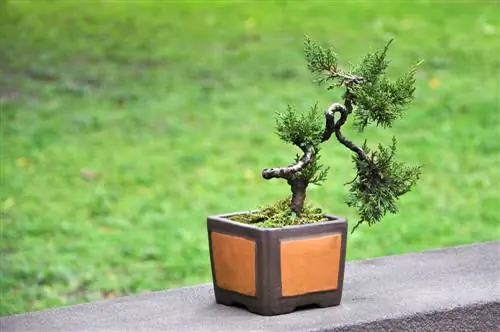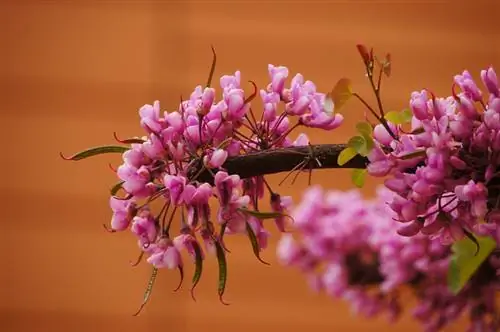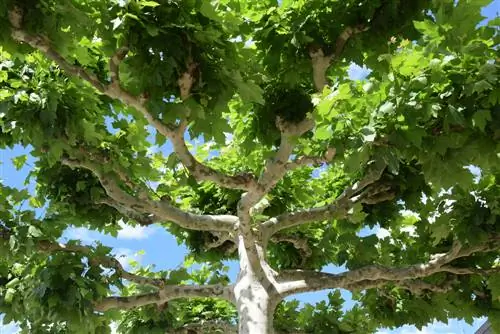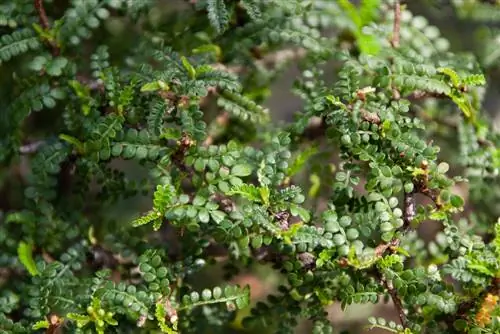- Author admin [email protected].
- Public 2023-12-16 16:46.
- Last modified 2025-01-23 11:22.
Trees of life prove to be very easy to cut, which is why the trees are perfect for bonsai art. Those who are impatient will be put to the test because Thuja species grow slowly. Anyone who dares will be rewarded with aesthetic growth forms.

How do I care for a tree of life bonsai?
To properly care for a tree of life bonsai, you should choose a partially shaded location, always keep the soil moist and fertilize regularly. Repot every two to three years and use design measures such as cutting and wiring to maintain an attractive miniature shape.
Claims
Trees of life require a bright location that is not in full sun. As an outdoor bonsai, the plant survives the winter outdoors.
Watering behavior
As with all bonsai trees, you should keep the soil continuously moist without causing waterlogging. If the summer months are particularly hot, daily watering is necessary. By rinsing off the needles, you ensure a moist climate in the crown.
Nutrient supply
If the tree is in the growth phase, which mainly extends from May to September, it needs sufficient nutrients for he althy growth. Apply a liquid fertilizer (€4.00 on Amazon) with the irrigation water every two weeks. During the winter months, reduce the intervals to every two months.
Repotting
Young trees require soil replacement every two to three years. They grow faster, so the planting bowl quickly becomes too cramped for them. Older specimens have a slower growth rate and only need to be repotted when their root ball has completely grown through the shell. As part of this measure, you can shorten the root system so that a balance is created between the leaf mass and the roots.
Trees of life like this substrate:
- conventional potting soil with high permeability
- pure Akadama Earth
- Mixture of universal and Kiryu earth, 50 percent each
Wintering
Thujas prove to be hardy, although the light supply must be guaranteed even in the cold season. Since the needles need water all year round, the soil must not freeze in winter. Otherwise, the roots can no longer ensure the water supply, so the leaves dry out and fall off. In harsh winter months, protection is advisable to avoid reddish-brown needle discoloration.
Design and styles
Aside from the broom shape, all styles are possible to bring the tree of life into an attractive miniature shape. Aesthetically, free and strict upright shapes or forest designs and small groups appear. A bonsai on rocks is also easy to implement.
Cutting
If you shape a conifer into a bonsai, corrective interventions are necessary. This way you keep the plant small. The needles of Thuja species are arranged in a fan shape in whorls, which are shortened by plucking off the tip at the beginning of each growing season. Arborvitae can easily tolerate pruning back into the old wood because they are characterized by strong shoots.
Wiring
This method can be used all year round to bend the branches into a desired shape. Wrap aluminum wire in a spiral around the young branches, which are easy to bend. Check regularly how quickly the branch is getting thicker. To ensure that no unsightly marks are left in the bark, you must remove the wire in good time.






